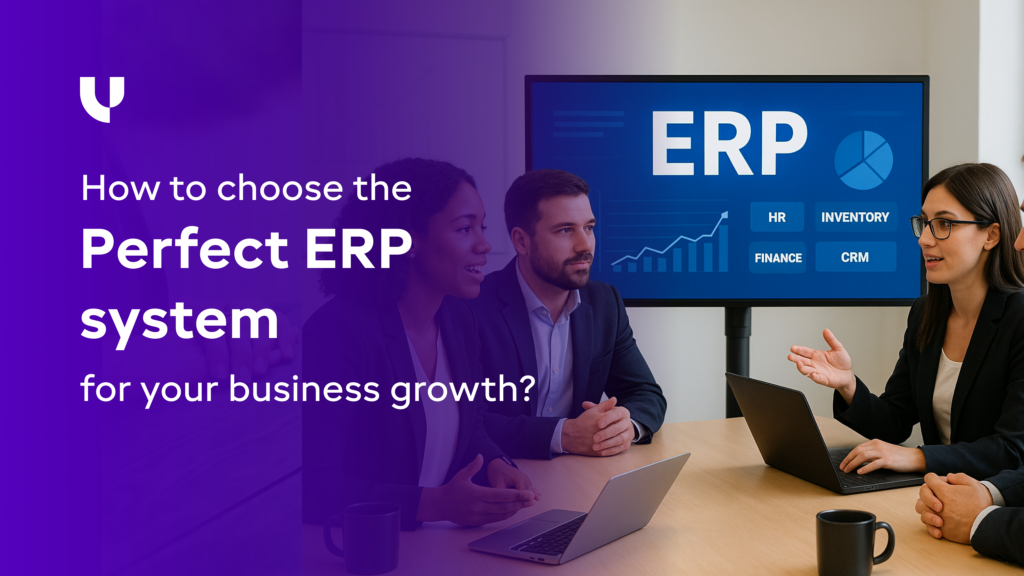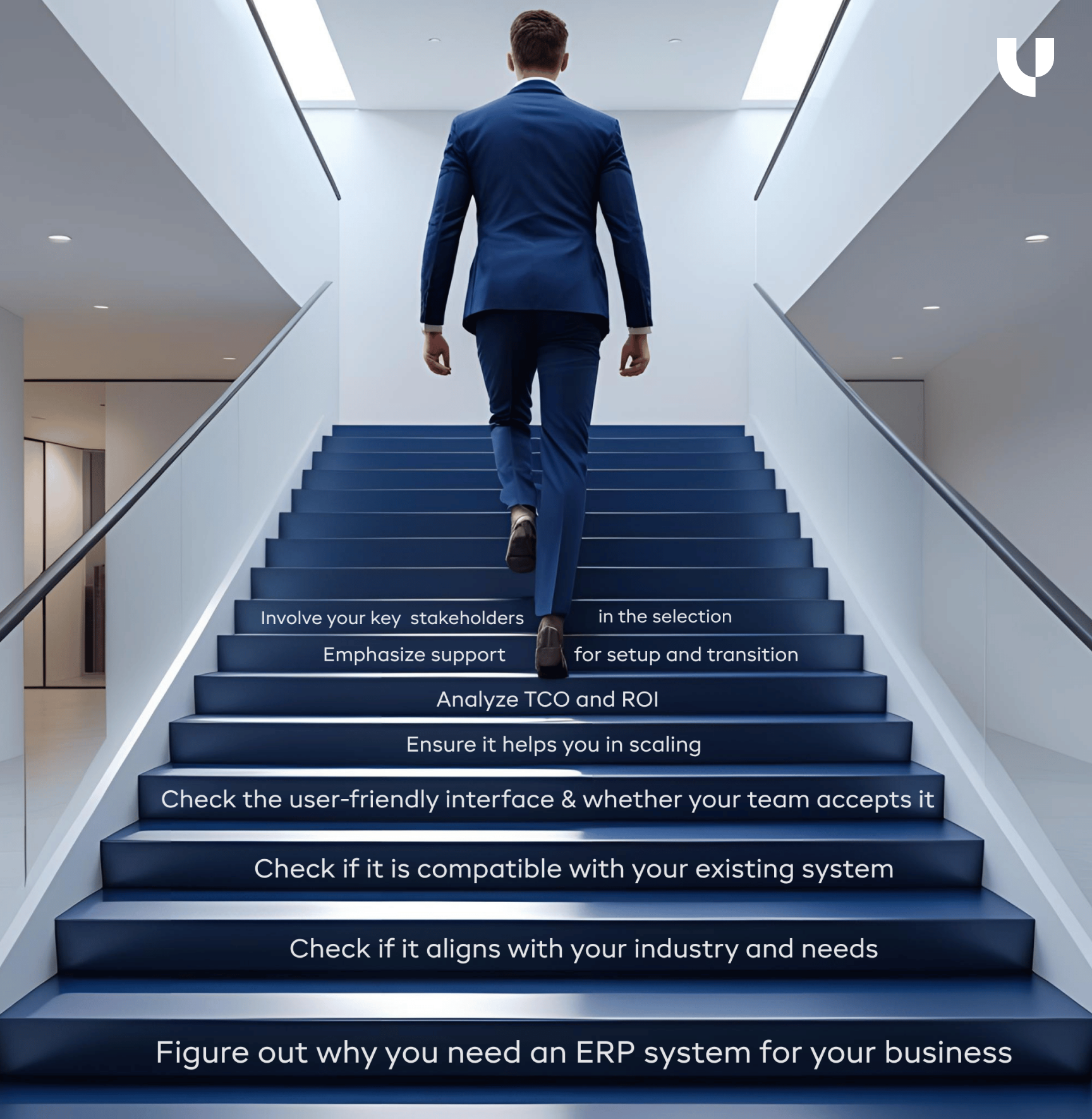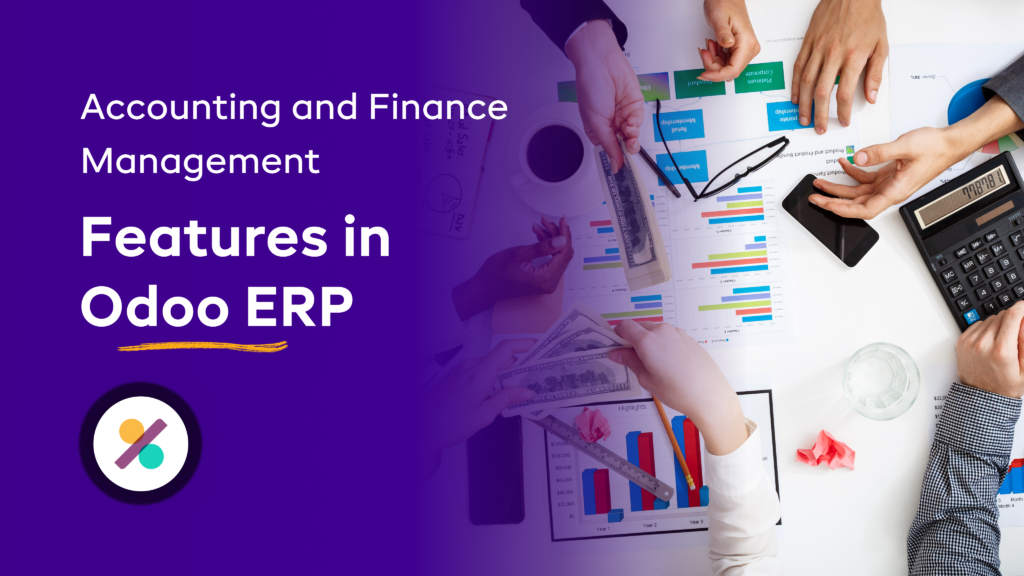How to choose the perfect ERP system for your business growth?
Published on July 24th 2025

Why does choosing an ERP matter for your business growth?
Over the last few years, working with businesses across various industries in the US, we can confidently say that an ERP system is not just a tool; it's a growth enabler. Whether you're a manufacturing firm in Ohio, a retail chain in California, or a logistics company in Texas, the right ERP can transform how you operate.
ERP systems streamline processes across departments, from inventory to finance, sales to procurement, offering a single integrated platform for data-driven decision-making. The ability to centralize information enables businesses to reduce redundancy, increase visibility, and make faster and more informed decisions. However, with a wide range of ERP options, such as Odoo, SAP, Salesforce, and ERPNext, choosing the right one often feels like charting a clear path. Every ERP comes with its own system of operations, pricing model, implementation curve, and industry strengths.
This blog is designed to guide you through selecting the ideal ERP system, providing decision-makers like you with a clear framework and comparative insights to make confident, informed choices.
And, if you’d like to explore ERP modules and deployment models, our breakdown of ERP types may help.
Top 8 steps to choose the right ERP system for your business growth

At Uncanny, we’ve created this helpful guide for clients who are setting up or switching to a new ERP system. It simplifies the process of selecting an ERP that aligns with your business goals making the journey smoother, more strategic, and less overwhelming.
1. Figure out why you need an ERP system for your business
Before exploring any ERP solution, businesses must first identify the underlying problems they aim to solve.
Are departments working in silos? Is there a lack of real-time data visibility? Is your current system causing delays in fulfilling customer orders or managing procurement?
Understanding your objectives will help narrow down ERP solutions based on relevance.
For example, a mid-size manufacturer may seek tighter control over shop floor activities and better visibility, while a service-oriented company may focus on project tracking and invoicing efficiency. Documenting these objectives will not only guide the software evaluation process but will also help align all internal stakeholders.
2. Check if it aligns with your industry and needs
No ERP solution is perfect for every business. Choosing an ERP that has been tailored or proven in your industry can significantly reduce customization time and increase usability.
In the US, many industries have unique compliance requirements, such as FDA standards in food and pharma, or labor tracking in manufacturing.
You should investigate whether the ERP system includes:
- Industry-specific workflows (e.g., batch tracking for food production)
- Modules aligned with your operational flow
- US-specific compliance features like sales tax automation, payroll integrations, or 1099 reporting
For instance, Odoo’s manufacturing suite is highly effective for small to medium-sized manufacturing companies, as it supports detailed routing, quality checks, and barcode-enabled inventory tracking without requiring expensive third-party add-ons.
If you’re still evaluating Odoo for your business, our Odoo consulting services can help you assess feasibility, costs, and growth alignment.
3. Check if it is compatible with your existing system
Many businesses already have systems in place for accounting, CRM, inventory, and more. Choosing an ERP that integrates well with these existing tools ensures continuity and minimizes disruption during migration.
Key aspects to evaluate include:
- Pre-built connectors to tools like QuickBooks, Shopify, or Salesforce
- RESTful APIs or webhooks for custom integrations
- Compatibility with existing databases or cloud platforms
For example, a retail brand we worked with was using Shopify and Mailchimp. By integrating these systems with Odoo using available connectors, we ensured that marketing, sales, and inventory were all in sync, resulting in a 25% increase in order processing efficiency.
This is a common challenge in retail, where integrated systems can improve coordination and reduce delays. See how ERP supports retail workflows.
4. Check the user-friendly interface & whether your team accepts it
ERP implementation is as much about people as it is about technology. One of the biggest reasons ERP projects have failed in the past is poor user adoption. If the system is too complex or counterintuitive, users will revert to old habits, deciding that the investment is ineffective.
It is essential to:
- Conduct user testing on a pilot basis with a few of your internal departments
- Assess the availability of training materials and in-app guidance
- Evaluate mobile responsiveness for field employees
During an ERP deployment for a construction supplier in North Carolina, we observed that field teams preferred a mobile-friendly interface for managing deliveries. Odoo's mobile-optimized apps gave them on-the-go access and significantly improved data logging accuracy.
5. Ensure it helps you in scaling
An ERP is not a short-term fix; it should support your business for the next 5–10 years. Whether you're planning to expand to new geographies, introduce new product lines, or add new services, your ERP must be ready to scale.
Check for:
- Modular design that allows adding new functionalities easily
- Cloud-based deployment options for remote work readiness
- Multi-company, multi-currency, and multi-language capabilities
With Odoo, businesses often start with a few modules such as Sales and Accounting, and later add Inventory, HR, and Manufacturing as the business grows, without replacing the system.
One of our UAE-based fiber optics engagements increased its revenue by 78.5% following the implementation of Odoo ERP, which was done by us.
6. Analyze TCO and ROI
The Total Cost of Ownership (TCO) extends far beyond just licensing fees. Decision-makers like you should include hidden or indirect costs in your calculations. Like,
- Cost of data migration and custom development
- Internal productivity loss during the transition
- Ongoing support, upgrade, and infrastructure costs
A good ERP partner should help you estimate ROI. For example, one of our mid-sized clients in Dallas reduced inventory holding costs by 18% and administrative hours by 25% within the first year of implementing Odoo.
A balanced view on ERP can be found in our piece on its major advantages and potential drawbacks.
7. Emphasize support for setup and transition
Having the right ERP for your business is only half the battle. How well it's integrated and how effectively people adapt to it determine success. An ERP implementation partner with deep industry knowledge and local support capabilities can make a significant difference.
Look for:
- End-to-end project planning and execution support
- US-based support or teams available in your time zone
- Training plans for actual users, admin staff, and IT teams
In our experience, teams that receive process-oriented training (and not just software tutorials) exhibit a 2x higher adoption rate post-implementation.
8. Involve your key stakeholders in the selection
Adopting an ERP system impacts every aspect of a business. It's vital to involve representatives from all departments during the selection process to ensure that the system addresses cross-functional needs.
Get input from:
- Finance leaders for compliance and audit features
- Sales teams for CRM and pipeline alignment
- HR and operations for resource management and scheduling
- IT teams for data security and integration feasibility
This holistic approach guides you in choosing the right ERP that provides a natural fit for you and your team within the existing system. With this foundation, we believe you are well-positioned to explore & compare ERP options that can truly contribute to your business growth.
Let’s co-create your ERP success roadmap
We don’t just implement ERPs. We build long-term partnerships that lead to scalable systems and sustainable growth. Curious about what that looks like for your business?
Book a Free Discovery Call
Comparing Top ERP Systems helping in driving business growth
To provide a clear view of popular ERP systems, we've compiled a handy comparison based on our recent insights. Having thoroughly familiarized ourselves with these systems, we believe it will aid in your decision-making and overall success.
| ERP Systems | Best For | Key Features | Pros | Cons |
|---|---|---|---|---|
| Odoo ERP | All-sized organizations seeking affordability & flexibility. |
• Integrated modules for Sales, CRM, HRMS, Accounting, and more. • Open-source with AI features. |
• Pocket-friendly, customizable, and user-friendly. • Odoo implementation partner provides training for quick adoption. | Complex cases may require customization, leading to slightly higher costs. |
| SAP | Large-sized organizations seeking in-depth data. |
• Elite supply chain • HR instant reports • AI forecasts |
• Streamlined operations and better data accuracy. • Helps in decision-making and business scaling. | Costly for beginners and mid-sized organizations. |
| Salesforce | Teams needing a cloud-based CRM platform. | • CRM Automation |
• Excellent for sales, marketing, and customer service. • Enhances customer relationships and internal processes. |
Costly and complex to implement. May be difficult for teams to adopt. |
| ERPNext | Small to medium-sized businesses in manufacturing, trading, distribution, etc. |
• HR & Payroll • Sales & Purchase • CRM • Project Management • Inventory | • Cost-effective with strong customization options. |
Struggles with large datasets. Difficult for some teams to adopt. |
A side‑by‑side comparison of Odoo and other ERP systems is available for deeper insights.
What are the top 6 key factors in choosing an ERP system?
Choosing a new ERP system is a milestone moment for your business. At Uncanny, we’ve walked this journey alongside founders, CFOs, and technology leaders who know their business inside and out but need guidance finding the perfect fit.
Here’s what you should truly focus on. Listed below are the top 6 key factors we often share with our clients, based on real-world experience, while choosing an ERP system.
1. Consider Your Goals and Pain Points
Start listing your biggest roadblocks. Maybe it’s inventory chaos, poor reporting, or overwhelming manual work.
Get specific: What does your team wish to achieve?
That’s where your ERP focus should begin.
2. Seamless Scaling
Whether you’re dreaming of global markets or expanding your business locally, make sure your ERP can grow right along with your business.
Imagine adding new users with ease, without having to start from scratch.
Seek out systems with modular add-ons and scalability features to keep your ERP in the same pace as your business.
3. Effortless Connections
Your ERP won’t work as a standalone. It needs to talk to your CRM, e-commerce, HR, and other tools.
A good ERP system fits into your existing systems like the missing puzzle piece.
When we say seamless integration, we mean fewer siloes and data accuracy.
4. People-First Design
Even the most powerful platform falls short if your team cannot adopt it. Select an ERP with intuitive menus, clear dashboards, and a supportive onboarding process so your team actually adopts the change.
5. Clear-Cut Costs and Value
Don’t just look at sticker price. We suggest considering the total cost, including training, integration, and future upgrades. Your investment must pay off by saving you time, reducing errors, and making your customers happier.
6. Rock-Solid Security and Compliance
Protecting your data is non-negotiable. Ensure your chosen ERP provides complete data security and helps you remain compliant with regulations specific to your industry and region.
Your business needs an ERP that fits like a glove and creates a success roadmap that feels empowering and less stressful, to be honest.
Why partner with Uncanny in choosing an ERP, setting up, and beyond?
Choosing an ERP, implementing it, and evolving with an ERP system can feel overwhelming at times, but it doesn’t have to be that way. Here’s why businesses turn to Uncanny when the stakes are high and transformation matters.
1. We listen to you
We begin by understanding your business’s DNA, including its unique workflows, growth ambitions, and pain points.
It’s never a “standard package” we offer everyone. Every solution emerges from thoughtful discussion and careful industry analysis, as we have learned that every business is unique.
2. We believe in personalization
Our team has hands-on experience with Odoo, SAP, Salesforce, and ERPNext. We’re not tied to a single platform. Our advice is driven by what’s genuinely right for your business, not by vendor incentives.
If customization, integrations, or simpler paths suit you best, you’ll hear it from us - no filter, no upsell.
3. We are result-driven
We believe that the impact of our work is best reflected in the practical improvements our customers have experienced over time.
For example, in one of our recent engagements, we supported e-commerce teams in streamlining their order and inventory processes, resulting in noticeable sales efficiency gains. In the manufacturing and fiber optics space, a company in UAE saw measurable revenue growth after fine-tuning its operations with a carefully tailored Odoo setup done by our team.
Our success roadmap clearly directs us to show tangible improvements.
4. We believe in long-term partnerships
With Uncanny, the partnership doesn’t end at the “go-live” stage. We guide you through:
- Change management and team adoption
- Ongoing optimization, including proactive check-ins, support, and upgrades as your business grows.
- Honest feedback and continuous improvements.
We believe that while you are in the process of choosing the best ERP system for your business, you don’t just need an ERP implementation vendor. You need a genuine growth partner, one who listens, leads, and puts your best interests first.
That’s what Uncanny stands for: UNCANN-Your ERP shift truly transformative.
How does the right ERP system fuel your business growth?
Choosing an ERP system can become overwhelming at first. But with a clear goal, a structured evaluation process, and the proper guidance, the process becomes your company’s growth engine. A good ERP system not only saves time and money, but it also empowers organizations like yours to operate with clarity, speed, and scalability.
Take the time to understand your needs, compare your options, and bring your team along for the journey, because the ERP you choose today will shape how you grow tomorrow.
And when you need an ERP implementation partner to help navigate this transformation, we at Uncanny are just a call away.
FAQs
Q. When is the right time for a business to implement or upgrade an ERP system?
If your business is struggling with data silos, frequent errors from manual human processes, growing operational complexity, or your team is planning to scale, it might be the right time to consider an ERP.
Q. What are the signs in the existing business process to choose an ERP system?
Signs include difficulties in reporting, duplicate data entry, and a lack of real-time visibility across siloed working departments.
Q. How long does it typically take to implement an ERP system?
ERP implementation timelines can vary depending on the size of your business, the complexity of your processes, and customization needs.
For a clearer sense of the process, check out our post on ERP implementation stages and challenges.
Q. What are the biggest pitfalls to avoid during ERP selection and setup?
Common pitfalls include failing to involve all key stakeholders in the decision-making process, underestimating the importance of change management, selecting software solely based on brand or price tag rather than business needs, and neglecting ongoing training and support. Ensuring a strong partnership with your ERP implementation provider helps you avoid these mistakes
Q. How do I make sure my team adopts and uses the new ERP system effectively?
Prioritize clear communication within your team about “why” the new ERP system is needed. Involve team members early on. Choose a system with a user-friendly interface. Invest in ongoing training and support. Encouraging feedback and addressing concerns quickly leads to higher adoption and more value from your ERP investment.

About Author


